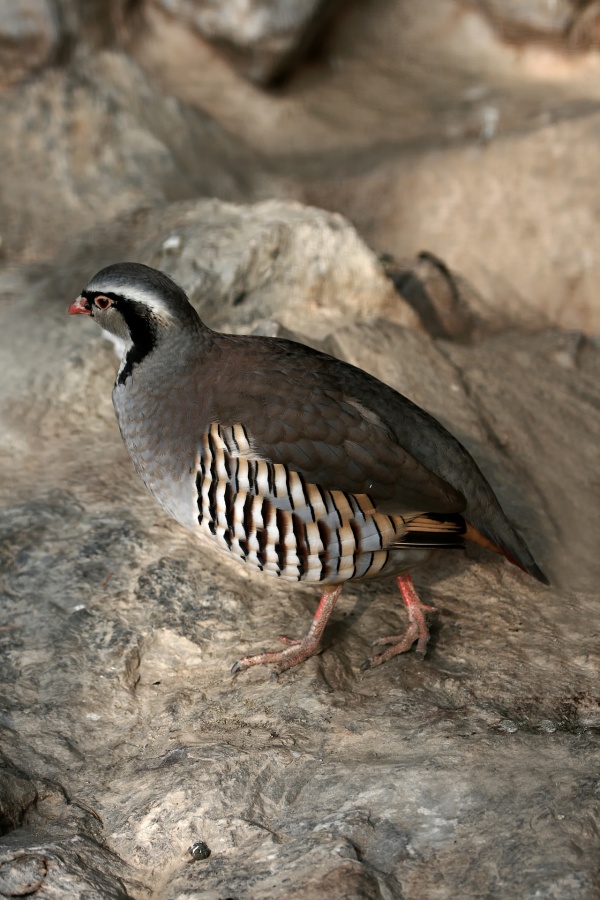Facts About Rock partridge
The rock partridge is a game bird from the pheasant family, Phasianidae, commonly found in southern Europe. Closely related to the Chukar partridge, it prefers to inhabit dry, open, and hilly regions. These birds primarily feed on seeds and insects and nest on the ground, laying between 5 and 21 eggs.
Visually, the rock partridge is distinguished by its light brown back, grey breast, buff belly, and red legs. While it bears a resemblance to the Chukar partridge, they can be differentiated by the rock partridge's distinctive white face adorned with a black gorget.
Unfortunately, the rock partridge population is declining, particularly in Sicily, due to habitat loss and excessive hunting. This bird belongs to a broader group of related species, including the Chukar and red-legged partridges. In regions where they have been introduced as game birds, hybrids of these species may also be encountered.
There are three recognized subspecies of the rock partridge, each exhibiting slight variations in color and genetics:
1. A. g. graeca: Found in Eastern Europe.
2. A. g. saxatilis: Found from the southern Alps to western Bosnia.
3. A. g. whitakeri: Found exclusively in Sicily.
Additionally, a proposed subspecies, A. g. orlandoi, supposedly originating from Albanian rock partridges, remains a subject of debate regarding its validity. The population in the Apennines is showing signs of diverging into a distinct subspecies.
Moreover, there is a paleosubspecies known solely from fossils, called A. g. martelensis. Considering the threats faced by the rock partridge in parts of its range, conservation efforts are essential to ensure its survival.
